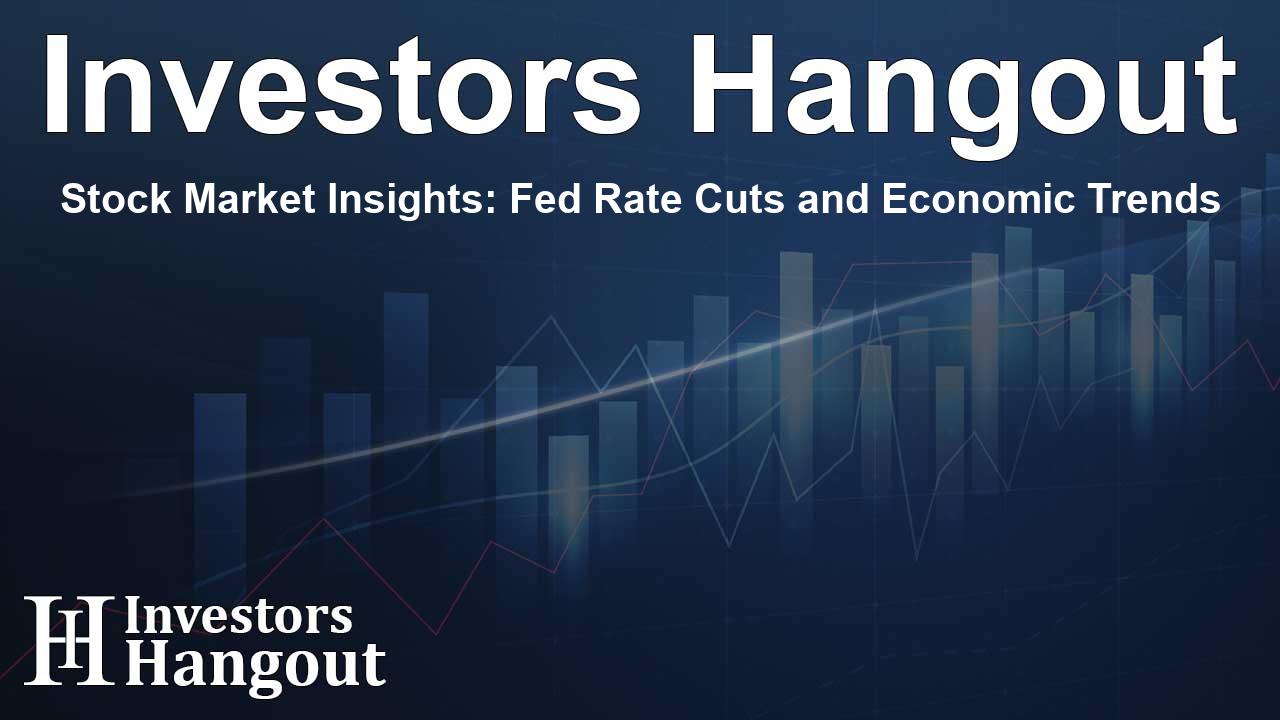Stock Market Insights: Fed Rate Cuts and Economic Trends

Understanding the Current Stock Market Trends
Investors in the stock market are experiencing a surge of optimism, largely driven by anticipations of a potential Federal Reserve rate cut. After the release of a disappointing employment report for July, the S&P 500 index has climbed to impressive new heights. It has shown a 3.4% increase since early August, reflecting a robust response from stock investors signalizing their belief in forthcoming monetary easing.
Contrarily, the bond market hasn’t shared this enthusiasm; the 10-year Treasury yield has risen over the same timeframe, suggesting caution among bond investors. Understanding the nuanced relationship between stock and bond markets is critical during these times as expectations around Federal Reserve actions become a primary focus for market participants.
Many market analysts, while cautious of a possible spike in bond yields, predict a pronounced rise in stock prices if another rate cut by the Fed materializes. This would support the theory that even without an immediate need for monetary policy intervention, the Fed's actions could inadvertently provoke a stock market rally.
Potential Market Dynamics of a Fed Rate Cut
A potential rate cut could ignite a significant rally, leading to significantly stretched valuation multiples. For instance, the Buffett Ratio has surged to unprecedented levels, pointing to expansive growth in the perceived value of stocks relative to their sales. Subsequently, the forward Price-to-Earnings ratio for the S&P 500 has approached levels that recall the peaks just before the dot-com crash, a sign of highly exuberant market conditions.
However, history suggests that such meltup phenomena often precede market corrections. Investors should remain vigilant, as sharp rises are frequently followed by declines. The tech sector's performance offers a stark reminder; its meltup experienced last year was poised on the back of artificial intelligence advancements but resulted in corrections in both the sector and the broader market.
Fed Concerns About Financial Stability
For the Federal Reserve, an asset price boom can complicate its dual mandate of both promoting employment and stabilizing prices. It is essential for the Fed to consider financial stability a crucial component of its objectives. Concerns about inflated asset prices could compel the Fed to reassess its policy approach moving forward, especially if market conditions continue to rise dramatically.
Latest Economic Indicators Suggest Caution
Despite the excitement over potential Fed rate cuts, the latest data from July does not uniformly support such a move. The labor market’s apparent weakness, with revised payroll increases highlighting substantial job growth concerns, adds a layer of complexity to policy discussions. Moreover, weak sector-specific performance amidst broader economic improvements emphasizes caution in interpreting employment data.
The ongoing trends in retail sales combined with resilient indicators from the Atlanta Fed signal that consumer health remains intact, which bodes well for sustained economic growth. These fiscal metrics suggest that a cut in interest rates may not be entirely justified given the lack of critical distress signals in the economy.
Inflationary Trends: The Double-Edged Sword
Inflation data presents a mixed narrative as well. While tariffs have helped push certain inflation figures upwards, the core Consumer Price Index (CPI) suggests that underlying inflation pressures are not as rampant as in previous eras. However, some service categories remain elevated and could contribute to inflationary pressures, signaling that the Fed must tread carefully.
Market Outlook and Future Considerations
The implications for investors revolve around understanding this delicate equilibrium of growth, inflation, and the Fed's reaction function. As we navigate through these dynamics, it’s critical for stakeholders to remain mindful of not only the historical performances of different sectors but also emerging trends that could shape future market landscapes.
Frequently Asked Questions
1. What is a Fed Put and how does it influence stocks?
A Fed Put refers to expectations that the Federal Reserve will intervene to support markets during downturns, potentially leading to increased stock prices.
2. Why are S&P 500 valuations currently high?
S&P 500 valuations are elevated due to optimism over future growth and potential interest rate cuts, pushing stock prices higher.
3. What could cause a market meltdown following a meltup?
Market meltdowns may occur when investor sentiment flips, often following rapid price increases that can result in corrections.
4. How do inflation data impact Fed policies?
Inflation data can influence Fed decisions regarding interest rates, as high inflation may compel the Fed to raise rates to control price stability.
5. How did technology stocks perform after the last market meltup?
Post-meltup, technology stocks saw corrections, illustrating that earlier appreciation can lead to substantial price declines if market conditions shift.
About The Author
Contact Henry Turner privately here. Or send an email with ATTN: Henry Turner as the subject to contact@investorshangout.com.
About Investors Hangout
Investors Hangout is a leading online stock forum for financial discussion and learning, offering a wide range of free tools and resources. It draws in traders of all levels, who exchange market knowledge, investigate trading tactics, and keep an eye on industry developments in real time. Featuring financial articles, stock message boards, quotes, charts, company profiles, and live news updates. Through cooperative learning and a wealth of informational resources, it helps users from novices creating their first portfolios to experts honing their techniques. Join Investors Hangout today: https://investorshangout.com/
The content of this article is based on factual, publicly available information and does not represent legal, financial, or investment advice. Investors Hangout does not offer financial advice, and the author is not a licensed financial advisor. Consult a qualified advisor before making any financial or investment decisions based on this article. This article should not be considered advice to purchase, sell, or hold any securities or other investments. If any of the material provided here is inaccurate, please contact us for corrections.
